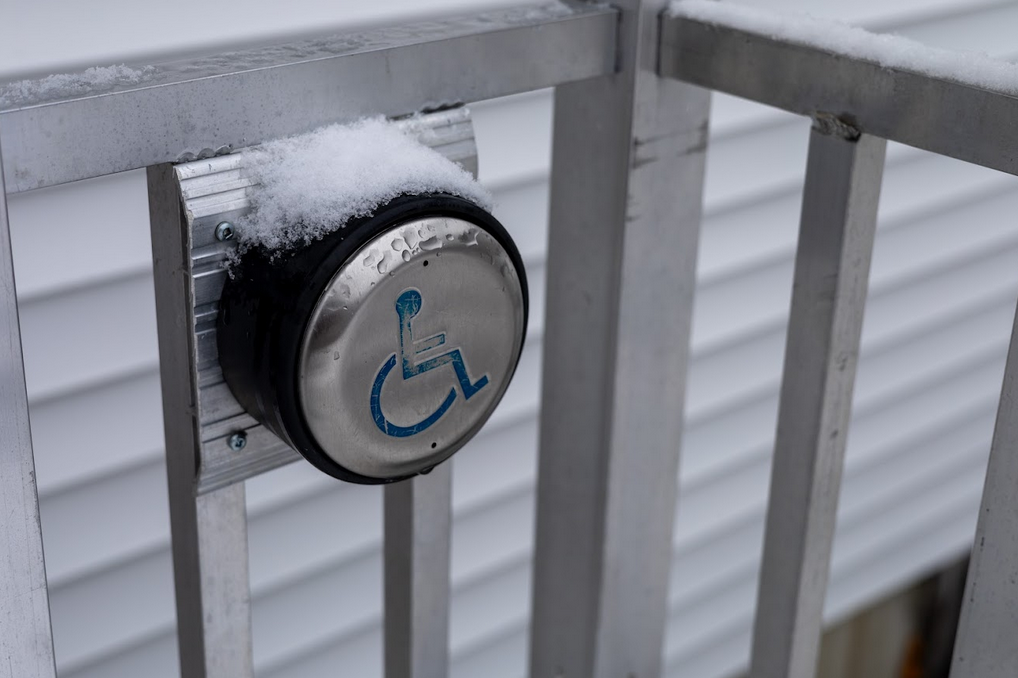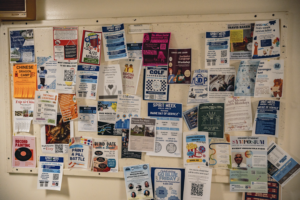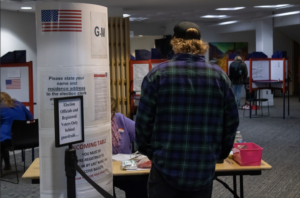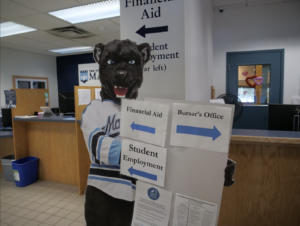Despite being a flagship state university, the University of Maine is sorely lacking in the disability accommodations required by the Americans with Disabilities Act (ADA). Physical access for those with disabilities is anemic at all levels of the university: in housing, in the classrooms and the dining halls.
The dining hall is a cornerstone of the undergraduate student living experience, yet this experience is not entirely equitable for those struggling with disabilities. Since the Sodexo takeover, the day’s menu at each dining hall has been displayed on small, highly-placed screens. These items are often listed in a font much too small, even for those without disabilities, and are practically useless for students who do. The dining hall issues were exacerbated by the closure of the Wells complex, which was long considered the most physically accessible dining hall for disabled students. With Wells shuttered and the reopening date being continually pushed back, students have little choice but to visit the considerably less accessible York and Hilltop dining centers. This is an especially pronounced problem for those living in the Oak and Hancock section of campus due to the distance between that area and York and Hilltop.
Additionally, several residence halls are sorely lacking in accommodation for disabled residents. At least three halls—Cumberland, Androscoggin and Gannett—do not have wheelchair-accessible elevators, with insufficient space for a wheelchair-using student to adequately rotate their equipment, while both Aroostook and Kennebec are lacking ramps for those using wheelchairs or crutches. Students in these two dorms are forced to use a steep set of granite stairs, rendering the simple task of even entering a dorm a Herculean task for disabled first-year students. Formerly, Student Accessibility Services had a van that shuttled disabled students around campus, but this program has been discontinued for several years. The lack of accommodations may potentially make students feel pressured to seek off-campus housing, which is not subject to the same regulations as those at the university and may expose disabled students to a whole new host of problems.
The inequities extend to the classroom as well. Some academic buildings, such as South Stevens Hall, lack elevators entirely. A disabled student hoping to attend a class on the second floor of South Stevens Hall will simply be unable to take that course. For those students who are not prevented from taking their classes by negligence and design flaws, the University does offer peer note-taking services to students who are less able to take notes while class is in session. However, these students are first forced to rely on auditory note-taking services for a semester before being permitted to use peer note-taking services. The University’s motivation in doing so is evident: saving money. Auditory note-taking requires no additional monetary input from the University, but student note-takers are paid between $50 and $100 in bookstore credits for their services. These unnecessary barriers to an adequate education can considerably disrupt a student’s academic schedule.
SAS, which has been described as tough to access, requires excessive documentation for those with longstanding disabilities (requiring them to be published within the last two years). Students who do not have documents this recent must turn to the overly long waitlists that are typical of the broken American healthcare system.
If the administration of UMaine is serious about the welfare of its students, concerted efforts are required to make the campus more accessible for its disabled students by improving physical access to classrooms, dormitories, and dining halls and allocating more funding to accessibility services.










